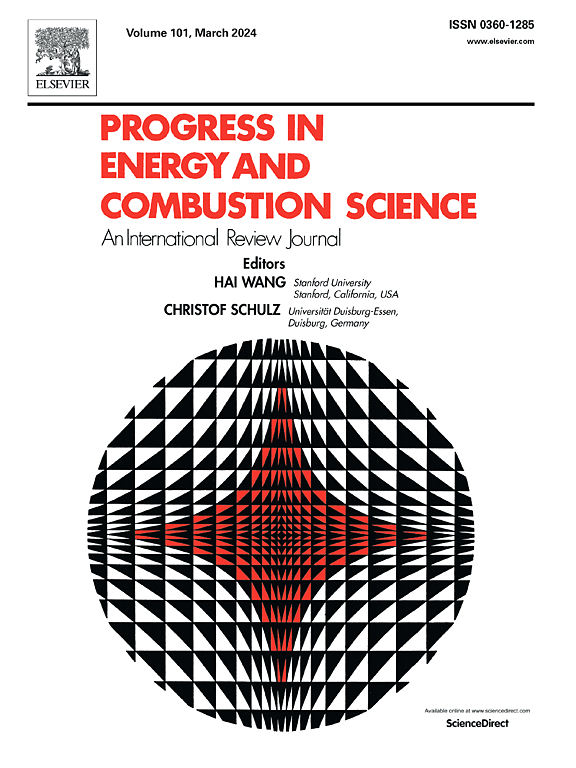Development of electrochemical reactors for CO2 electroreduction—the viability of an electrochemical CO2 plant in Brazil
IF 32
1区 工程技术
Q1 ENERGY & FUELS
引用次数: 0
Abstract
Our global economy based on burning fossil fuels reached a turning point in the 2020s as problems arising from climate change are becoming increasingly evident. An important strategy to decrease anthropogenic CO2 emission relies on carbon capture and storage (CCS). However, the challenges associated with long-term storage of CO2 in the gas phase highlight the need for a viable Chemical Fixation of CO2. In this scenario, electrochemistry gains prominence since electricity from renewable sources can provide the electrons needed for CO2 electroreduction. The main drawback is the high stability of CO2, the most oxidized form of carbon. Our intention in this Perspective is to give a concise overview of CO2 electroreduction, focusing on why working in the gas phase may help overcome mass transport limitations due to the low solubility of CO2 and how the chemical environment can affect selectivity and activity. We also explore a carbon-emission analysis applied to a CO2 electrochemical system. To do so, we assumed a Brazilian scenario, that is, the carbon footprint associated with electricity generation in the country. Since Brazil relies on more renewable energy sources, an electrochemical reactor that converts CO2 to oxalate with a conversion efficiency (CE) of 20% is enough to result in CO2 abatement, that is, an oxalate production with a negative carbon footprint. Compared with the United States of America, such a system would need to operate at higher CE, 50%, to produce similar results. These results evidence how intricate the implementation of an electrochemical plant is with the carbon footprint of the electricity source.CO2电还原电化学反应器的开发——巴西CO2电化学装置的可行性
随着气候变化带来的问题日益明显,以化石燃料为基础的全球经济在本世纪20年代迎来了一个转折点。减少人为二氧化碳排放的一项重要战略依赖于碳捕获与封存(CCS)。然而,在气相中长期储存二氧化碳的挑战突出了对二氧化碳可行的化学固定的需求。在这种情况下,电化学变得重要,因为来自可再生能源的电力可以提供二氧化碳电还原所需的电子。主要的缺点是二氧化碳的稳定性高,二氧化碳是碳的最氧化形式。我们的目的是简要概述CO2电还原,重点是为什么在气相中工作可能有助于克服由于CO2的低溶解度而导致的质量传输限制,以及化学环境如何影响选择性和活性。我们还探讨了应用于二氧化碳电化学系统的碳排放分析。为此,我们假设了巴西的情况,即该国与发电相关的碳足迹。由于巴西依赖更多的可再生能源,一个将二氧化碳转化为草酸盐的电化学反应器,其转化效率(CE)为20%,足以实现二氧化碳减排,即产生负碳足迹的草酸盐。与美国相比,这样的系统需要在更高的CE(50%)下运行,才能产生类似的结果。这些结果证明了电化学工厂的实施与电力来源的碳足迹是多么复杂。
本文章由计算机程序翻译,如有差异,请以英文原文为准。
求助全文
约1分钟内获得全文
求助全文
来源期刊

Progress in Energy and Combustion Science
工程技术-工程:化工
CiteScore
59.30
自引率
0.70%
发文量
44
审稿时长
3 months
期刊介绍:
Progress in Energy and Combustion Science (PECS) publishes review articles covering all aspects of energy and combustion science. These articles offer a comprehensive, in-depth overview, evaluation, and discussion of specific topics. Given the importance of climate change and energy conservation, efficient combustion of fossil fuels and the development of sustainable energy systems are emphasized. Environmental protection requires limiting pollutants, including greenhouse gases, emitted from combustion and other energy-intensive systems. Additionally, combustion plays a vital role in process technology and materials science.
PECS features articles authored by internationally recognized experts in combustion, flames, fuel science and technology, and sustainable energy solutions. Each volume includes specially commissioned review articles providing orderly and concise surveys and scientific discussions on various aspects of combustion and energy. While not overly lengthy, these articles allow authors to thoroughly and comprehensively explore their subjects. They serve as valuable resources for researchers seeking knowledge beyond their own fields and for students and engineers in government and industrial research seeking comprehensive reviews and practical solutions.
 求助内容:
求助内容: 应助结果提醒方式:
应助结果提醒方式:


